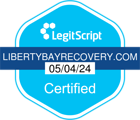Combating the Maine Painkiller Crisis
An estimated 2 million Americans misused prescription opioids at least once in the previous year, according to the 2020 National Survey on Drug Use and Health. In the same year, 1.5 million people abused benzodiazepines, 1 million abused prescription stimulants such as Adderall or Ritalin, and 271,000 misused a sedative. Prescription drug misuse affects a large portion of the population in Maine as well as the rest of the country, and deaths from prescription drug abuse, addiction, and overdose continue to rise.
Maine is in the grips of the national painkiller misuse crisis. In June 2021, there were 880 overdoses in Maine, according to the Office of the Attorney General and Office of Behavioral Health. Sixty of the people who overdosed passed away. Of the 515 opioid-related overdose deaths in 2020, 67% involved fentanyl, according to the Maine Drug Enforcement Agency.
Unfortunately, drugs enter Maine through all the channels used successfully by traffickers worldwide, such as package delivery services; U.S. mail; covert shipping containers; couriers using public transportation, including planes, trains, and buses; and private boats that can anchor in any of Maine’s numerous remote coves.
Chronic Pain Leading to Addiction in Maine
A recent study found that 50.2 million American adults, more than one in five, experience chronic pain. Researchers using data from the redesigned 2019 National Health Interview Survey determined that in that year, 22.1% of adults with chronic pain had used a prescription opioid in the previous three months. Prescription painkiller use was greatest 25.9% among those aged 45–64 and declined among those 65 and older.
Some people are concerned that using narcotic pain relievers will result in addiction. While these medications are intended to lessen sensitivity to pain, they also provide a high, which some individuals may start to desire. You are less likely to experience problems if you take the painkillers your doctor prescribed and follow the directions strictly.
Maine has the second-largest elderly population in the United States: 20% of Mainers are over 65, compared with 21% of Floridians. Maine’s large population of older adults increases the likelihood of more people with chronic pain, many of whom may turn to painkillers. The significance is that Maine is one of the states that has been severely affected by the opioid crisis.
The Mayo Clinic notes that addiction is a possibility for everybody who uses painkillers. Opioids, a family of highly effective but highly addictive painkillers that includes oxycodone, codeine, and morphine, are present in this category’s most frequently prescribed medications. Although opioids can be used to treat pain, abuse of these drugs is driving the current drug pandemic sweeping the country, especially in Maine.
Developing an Addiction
Who is susceptible to developing an eventual reliance on and misuse of these medicines depends on your personal history and how long you have used painkillers, but this is hard to foresee. Nevertheless, these substances, whether legal or illicit, stolen or traded, are to blame for the bulk of overdose deaths in the United States today, particularly in Maine.
The disease known as addiction occurs when something that was once delightful becomes something you can’t live without. Doctors define substance addiction as having a desire for a drug, using it uncontrollably, and repeatedly continuing to use it while experiencing adverse effects. Opioids are very addictive, in large part because they trigger your brain’s potent reward regions to become active. Endorphins, the feel-good neurotransmitters in your brain, are released due to opioid use.
Endorphins produce a fleeting but potent sense of well-being by decreasing pain perception and increasing pleasure. So, you could find yourself yearning for those positive emotions to return as quickly as possible after an opiate dose wears off.
Fatalities in Maine
Maine saw approximately 636 overdose deaths in 2021, up 23% from the previous year, the Portland (ME) Press Herald reported. One of Maine’s most important public health challenges is the rapid increase in opioid and prescription drug overdoses during the past 10 years. The age-adjusted rate of drug overdose deaths climbed by 32%, compared to 19% nationally, during the years 2014–2016 and 2015–2017. With 443 fatal overdoses in 2017, as opposed to 378 in 2016, Maine’s recent spike in overdose mortality persisted. Additionally, Neonatal Abstinence Syndrome affected roughly 8% of newborns born in Maine in 2018. In Maine, males under 70 currently lose the most years of life prematurely due to drug overdose.
Painkiller Misuse in Maine
In Maine, there were 380 drug overdose deaths in 2018; opioids were at least partially to blame for 84% of those deaths. Of the state’s opioid-related deaths, 25% occurred in Cumberland County alone. Nearly 50% of Cumberland County’s primary treatment admissions in 2019 had an opiate or opiates component. Between 2014 and 2018, the number of pregnant women seeking treatment for heroin/morphine increased. Pregnant women in Maine were gradually more admitted to primary drug use treatment programs for heroin/morphine from 2014 to 2018, making up 47% of all direct admissions.
Raising Awareness in Maine
Recently, groups in Maine have been promoting campaigns to increase public awareness of the prevention and treatment of drug misuse. Thanks to these initiatives, there is a change in the number of people seeking treatment.
The establishment of a new OPTIONS team in each county is one of the ways the state is waging its war on drugs. These overdose response teams aim to interact with local residents struggling with drug addiction and provide them with services.
The Maine Opioid Response Strategic Action Plan is an initiative using targeted, evidence-based solutions with a focus on Maine to combat the epidemic of substance use disorders (SUD) and opioid use disorders (OUD). The strategy is overseen by the Maine Director of Opioid Response, who collaborates with local and state partners and provides monthly updates on progress.
Signs of Painkiller Dependence and Misuse
The phrase “opioid dependency” refers to how your body adapts and starts to require opioids to counteract undesirable consequences. “You should talk to your doctor,” advises Hammond, “if you find that you’re taking medication more frequently than suggested, like every four hours instead of six,” or need frequent refills. In addition, you may require more medicine to get the same pain relief since your body may be establishing a tolerance to the drug.
Withdrawal symptoms
When someone has quit using the painkiller they’ve been abusing, they can experience these symptoms as the drug is leaving their body:
• Agitation and anxiety
• Sweating
• Insomnia
• Muscle aches
• Abdominal cramping and diarrhea
• Nausea and vomiting
If you discover that you’re abusing prescription opioids for the “high” they provide you rather than for pain relief, you may be developing an addiction. It’s also a red flag if you can’t quit using drugs despite having harmful effects at your job, school, or home.
Painkiller Addiction Treatment in Maine
A person has a full-blown addiction when drug-seeking behavior spirals out of control and jeopardizes their bodily and mental well-being. In contrast to a strong urge to take drugs, addiction is a neurological condition that feels unstoppable to the individual experiencing it.
For Mainers with substance abuse problems, there are more than 150 drug rehab facilities that offer treatment. Several treatment options are accessible, including centers specializing in detox and maintenance for people with opioid and opiate dependency. There is no “one size fits all” method of treating patients, which is reflected in the variety of treatment choices available. They include medication, counseling, and behavioral therapy.
Medication
Withdrawal symptoms frequently cause relapse and continued prescription medication misuse. However, medications can help you avoid symptoms and get through opioid withdrawal. Nevertheless, you are vulnerable to relapse after the initial detox. Common triggers include stress and events that make you remember how good the drug once made you feel.
Medications approved to treat painkiller addiction include:
• Long-acting opioid methadone (also known as Dolophine or methadone) affects the same areas of your brain as the substance you are struggling with, but it doesn’t make you feel euphoric, and you can take it daily. The proper dosage reduces drug cravings and avoids withdrawal symptoms.
• Another drug approved for treating opioid dependency is buprenorphine. Though not as powerful, it still binds to the same receptors in your brain. Due to the lower chance of a fatal overdose, specialists frequently recommend it.
• As an opiate receptor blocker, naltrexone doesn’t reduce withdrawal symptoms or cravings as methadone or buprenorphine does. However, if you take it while using drugs, you won’t get high. In a comprehensive rehabilitation treatment program, naltrexone functions best. Once detox is complete, you’ll begin it. It can be administered by mouth (Revia) or injection (Vivitrol).
• Although the drug Lucemyra, which contains lofexidine hydrochloride, is not an opioid, you can take it to reduce withdrawal symptoms. Lucemyra can be used for a maximum of 14 days.
Counseling and Behavioral Therapies
Treatment facilities in Maine offer long-term maintenance therapy that combines medicine with counseling, or behavioral therapy improves your chances of overcoming opiate addiction. This therapy is referred to as medication-assisted therapy (MAT). During MAT, you can address any social or interpersonal issues that might be causing your addiction or making it worse by seeking counseling from a licensed health expert.
One of more of the following could be part of your treatment plan:
• Cognitive behavioral therapy (CBT)
• Motivational interviewing
• Contingency management
• 12-step groups
• Support groups
Residential Treatment
Living with others who share your circumstances and supporting one another through your recovery is possible with residential treatment programs. In addition, several hospitals also provide inpatient programs for patients with illnesses. These therapies involve various forms of psychotherapy or behavioral therapy in addition to prescription drugs.
Alternatives to Prescription Painkillers
There are other ways to manage your pain. Consult your physician about alternatives to opioid painkillers, such as non-steroidal anti-inflammatory medicines (NSAIDs) like naproxen. Other options include physical therapy, acupuncture, and lifestyle modifications like maintaining a healthy weight and a nutritious diet.
Rehab Treatment in Maine
At Liberty Bay Recovery, we offer excellent rehabilitation at our facility in Portland, Maine. Visit us at our recovery center to reclaim your life and fight your addiction. We provide compassionate, individualized care for people with dependence and addiction issues. Our treatment programs are founded on effective, scientifically validated practices. The social, psychological, and physical components of drug use and rehabilitation are all addressed using a holistic approach.
Detox and rehab are available in the same location. In addition, we provide both residential and outpatient care. These two treatments complement one another effectively and give the highest chances for recovery. Contact us today, and we can help you or a loved one recover and start living a happy, productive life of sobriety.
reatment options.




